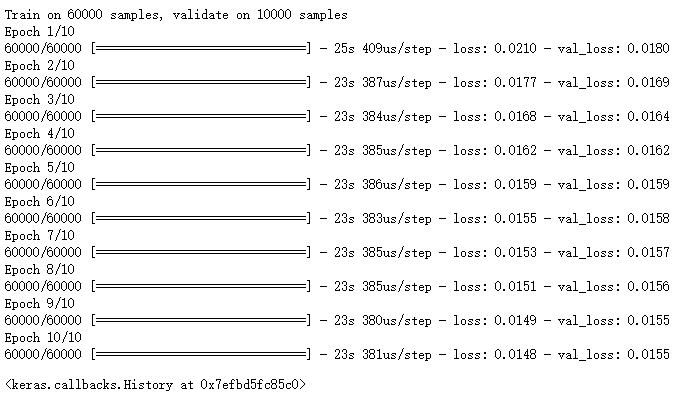#为图像像素点增加高斯噪音 noise = np.random.normal(loc=0.5, scale = 0.5, size = x_train.shape) x_train_noisy = x_train + noise noise = np.random.normal(loc=0.5, scale = 0.5, size = x_test.shape) x_test_noisy = x_test + noise #添加噪音值后,像素点值可能会超过1或小于0,我们把这些值调整到[0,1]之间 x_train_noisy = np.clip(x_train_noisy, 0., 1.) x_test_noisy = np.clip(x_test_noisy, 0., 1.)
autoencoder = Model(inputs, decoder(encoder(inputs)), name = 'autoencoder') autoencoder.compile(loss='mse', optimizer='adam') autoencoder.fit(x_train_noisy, x_train, validation_data = (x_test_noisy, x_test), epochs = 10, batch_size = batch_size)

#获取去噪后的图片 x_decode = autoencoder.predict(x_test_noisy) ''' 将去噪前和去噪后的图片显示出来,第一行是原图片,第二行时增加噪音后的图片, 第三行时去除噪音后的图片 ''' rows , cols = 3, 9 num = rows * cols imgs = np.concatenate([x_test[:num], x_test_noisy[:num], x_decode[:num]]) imgs = imgs.reshape((rows * 3, cols, image_size, image_size)) imgs = np.vstack(np.split(imgs, rows, axis = 1)) imgs = imgs.reshape((rows * 3, -1, image_size, image_size)) imgs = np.vstack([np.hstack(i) for i in imgs]) imgs = (imgs * 255).astype(np.uint8) plt.figure() plt.axis('off') plt.title('first row: original image , middle row: noised image, third row: denoised image') plt.imshow(imgs, interpolation='none', cmap='gray') plt.show()
